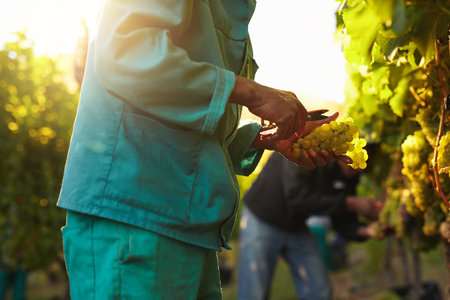The CAHRC predicts the industry will face significant labour shortages costing the country millions
By Jennifer Jackson
A common trend is sweeping over Canada’s agriculture industry – domestic labour shortage. The horticultural industry is no stranger to this trend, according to the Canadian Agricultural Human Resource Council(CAHRC), in a Jan. 17 release.
Researchers conducted a study to forecast labour shortages up until 2025, highlighting hurdles the sector faces to attract a stable workforce.
In 2014, there were some 107,700 jobs in the horticulture industry, in addition to 5,800 unfilled jobs. These vacant positions accounted for approximately $353 million in lost sales. The council predicts as the job vacancies rise, the cost to the industry will also rise.
All commodity sectors in horticulture share the similar characteristic of labour requirements based heavily on seasonal demands.
The seasonal variability and labour intensive work creates a dependency on foreign workers, according to the release. In 2014, the industry employed some 75 per cent of all foreign agriculture workers; one in three workers in horticulture was foreign. The council forecasts this dependency on foreign workers to grow as domestic labour shortages increase.

Jacoblund/iStock/GettyImagesPlus
CAHRC released the following largest factors contributing to foreign labour dependency:
- An aging and retiring domestic workforce
- A deficit of skilled domestic workers
- A domestic negative perception of the industry and labour
- And rural labour locations not accessible by public transit, and lacking housing options
In Ontario, many of these job vacancies are addressed by the Temporary Foreign Worker (TFW) program, according to Ken Forth, labour section chair for the Ontario Fruit and Vegetable Growers' Association (OFVGA).
The TFW program, “is a program that works for everybody – it works for the worker, it works for the farmer, it makes Canada richer, and it makes the industry happen.
“Canadians are not looking for a seasonal job – you can’t work six months and then survive. Foreign workers see the six months as an opportunity,” says Forth. “The average worker spends from 22 to 24 weeks here.”
What could this domestic labour shortage mean for the future of agriculture? Debra Hauer, manager of Agri LMI for the CAHRC, believes it may place a heavier emphasis on technology.
“There are a number of possibilities – the ag-industry may not be able to take advantage of the growth opportunities that present themselves,” she says. “Growers may increase the use of new technology and mechanization to lower the reliance on labour – this has already happened to a large extent in horticulture. We are forecasting that this trend may continue but at a slower pace as in the past ten years.”
The Canadian Government will help the CAHRC create human resource tools specifically to help those in agriculture seek and maintain a strong workforce.
More information on labour resources, and each horticultural commodity report can be found on the CAHRC website.
In such an agriculture-rich province, Forth believes steady labour is crucial.
“Ontario is the most diversified agriculture province in Canada,” he says. “If these (foreign worker) programs do not happen, there will not be a horticulture industry.”
Click here to see more...